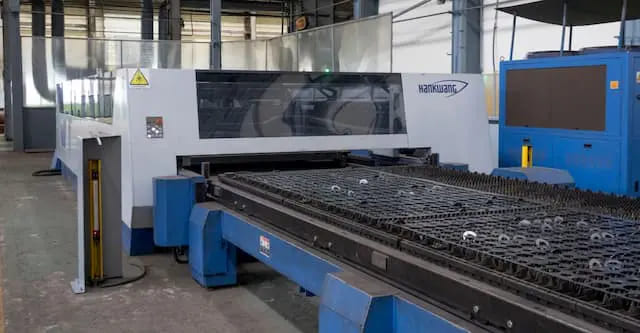Water jet cutting vs. Laser Cutting: A Comprehensive Comparison
In CNC machining, precision and efficiency are crucial. As two popular cutting methods, water jet cutting and laser cutting each have their own unique advantages and are widely used in many industries. This article will compare water jet cutting and laser cutting in depth to help readers better understand the two technologies and provide a reference for choosing the appropriate cutting technology.
1、What is water jet cutting?
Water jet cutting is a precise method of cutting materials using a high pressure stream of water mixed with an abrasive particle that enhances the cutting power, making it possible to cut a wide range of materials including metal, stone, glass, ceramic and composites.
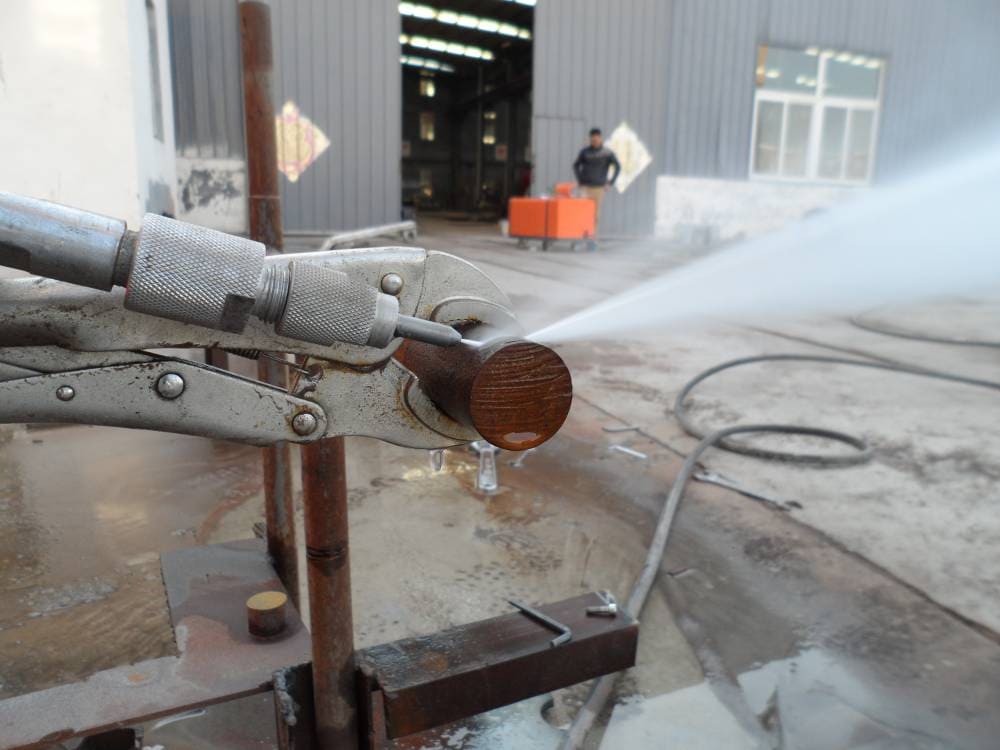
2、Advantages of water jet cutting
1.Versatility
Can handle materials of varying thickness and complexity, suitable for aerospace, automotive, construction and manufacturing industries.
2.Small heat-affected zone
As a cold cutting process, no heat is generated during the cutting process, eliminating the risk of material deformation, melting or warping, making it an ideal choice for heat-sensitive materials.
3.High precision
Can achieve extremely high precision, with tolerances as low as ±0.003 inches, suitable for complex designs and fine materials.
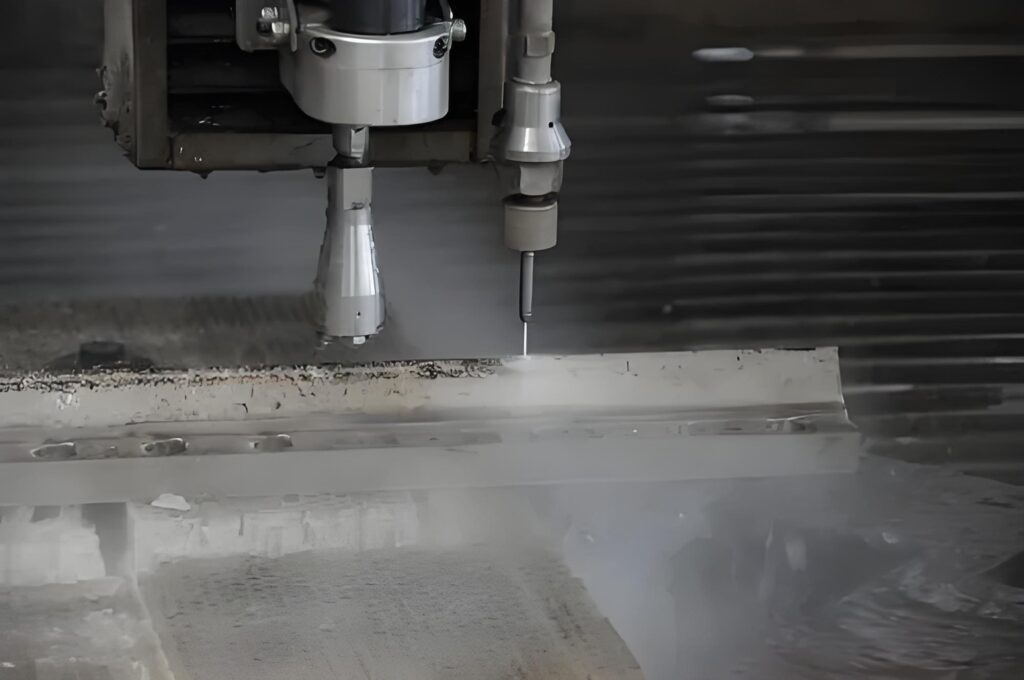
3、Application of water jet cutting
Water jet technology has reliability and high precision in all aspects of manufacturing. Applications in different fields are as follows:
1.Construction and civil engineering
Water jet cutting machines can be used to cut building materials such as concrete, rock, brick and stone, and can also drill holes and clean concrete surfaces.
2.Automobile manufacturing industry
It is used to cut automobile parts such as engine hoods, doors, etc., and clean automobile parts.
3.Aerospace manufacturing industry
Cutting aircraft parts such as wings, fuselages, etc., and can also clean aircraft engines and fuselages.
4.Oil and gas industry
Cutting pipes, valves and drilling equipment, etc., and cleaning pipes and equipment in oil and gas wells.
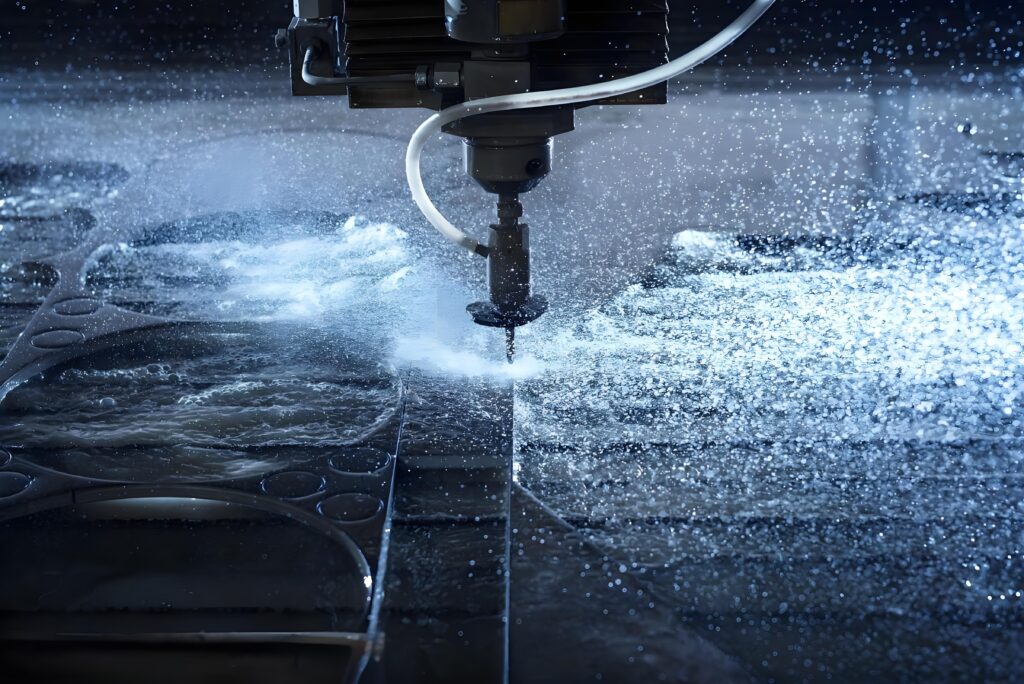
5.Food processing industry
Cutting foods such as meat, fruits and vegetables, and cleaning food processing equipment and containers.
6.Medical equipment manufacturing industry
Cutting medical equipment parts, cleaning medical equipment and surgical instruments.
7.Electronics manufacturing industry
Cutting electronic components and circuit boards, cleaning electronic equipment and circuit boards.
8.Glass manufacturing industry
Cutting glass, cleaning dirt and dust on the glass surface.
9.Textile manufacturing industry
Cutting textiles, cleaning textiles.
4、The principle of laser cutting
Laser cutting uses a high-powered laser beam to cut a variety of materials. The laser beam is focused and directed by computer-controlled mirrors, vaporizing or melting the material to produce a clean, precise cut.
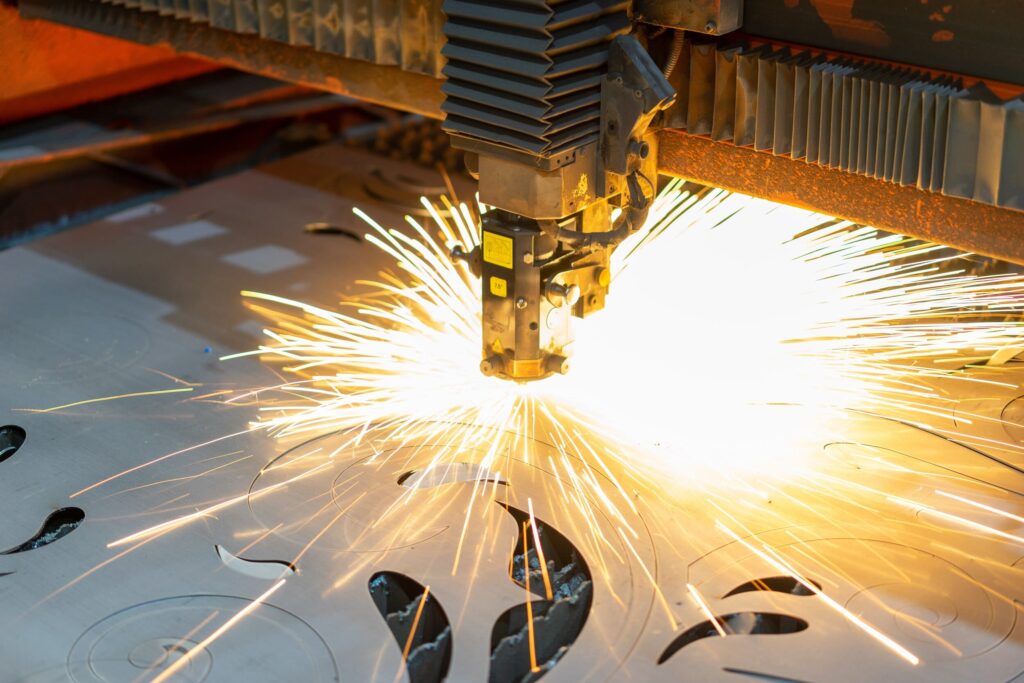
5、Advantages of laser cutting
1.Speed and efficiency
Known for its high-speed cutting, it is the first choice for projects that require fast delivery times. Cuts thin to medium thickness materials easily and quickly.
2.Accuracy
Extremely accurate with errors as low as ±0.001 inches. Enables extremely precise cuts and complex geometries.
3.Versatility
Suitable for a variety of materials including metal, plastic, wood, fabric, etc.
6、Application fields of laser cutting
1.Medical Device Industry
Manufactures sophisticated surgical instruments to ensure every millimeter of accuracy to affect patient outcomes. Precisely produces implants such as stents and joint replacements to ensure compatibility and functionality.
2.Electronics Industry
Cutting complex components for electronics and printed circuit boards (PCBs), where precision is critical. Laser etching and cutting of silicon wafers is a key step in the semiconductor manufacturing process.
3.Jewelry Industry
Creates exquisite and complex patterns with precious metals such as gold, silver and platinum. Uses laser engraving technology to customize personalized patterns for jewelry.
4.Shipbuilding and Marine Industry
Manufactures strong and precise components required for ship construction, such as hull sections and complex accessories. Expertise in processing stainless steel sheets to ensure high-quality cutting with little waste.
5.Furniture and Interior Design
Makes it easier to make custom furniture and interior design elements that can be customized to specific aesthetic and functional needs.
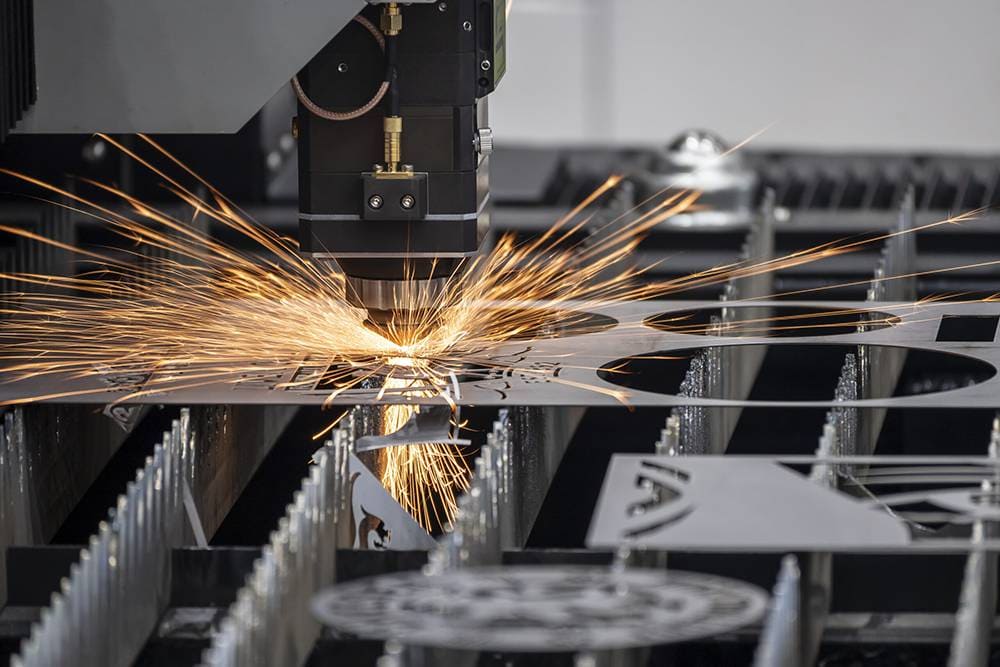
6.Defense and Military
Manufactures high-precision and strength vehicle parts and produces precision weapon parts.
7.Railway and Transportation
Manufactures high-strength, precision components for railway vehicles. Manufactures precision and complex components for transportation infrastructure, emphasizing durability and precision.
8.Plastic and Polymer Cutting
Cutting precise, complex shapes of a variety of plastics and polymers. Providing a clean, efficient process for cutting thermoplastics, acrylics, and other polymers.
9.Glass Cutting
Precisely cut and etch glass for architectural applications, creating beautiful patterns and designs. Processing glass components in the automotive industry to ensure precise dimensions and surface finish.
10.Tool and Die Industry
Excels in processing hard materials used in mold making, maintaining accuracy even when processing hard metals. Able to create complex shapes and patterns in molds and stamping dies.
7、Comparison between water jet cutting and laser cutting
Comparison of material suitability
Both water jet cutting and laser cutting can process a wide range of materials. Water jet cutting is particularly suitable for cutting thick and heat-sensitive materials such as metal, stone and glass. Laser cutting excels in cutting thin to medium-thick materials, including metal, plastic and wood.
Comparison of cutting speed
Laser cutting is generally faster than water jet cutting in terms of cutting speed due to the highly concentrated energy of the laser beam.
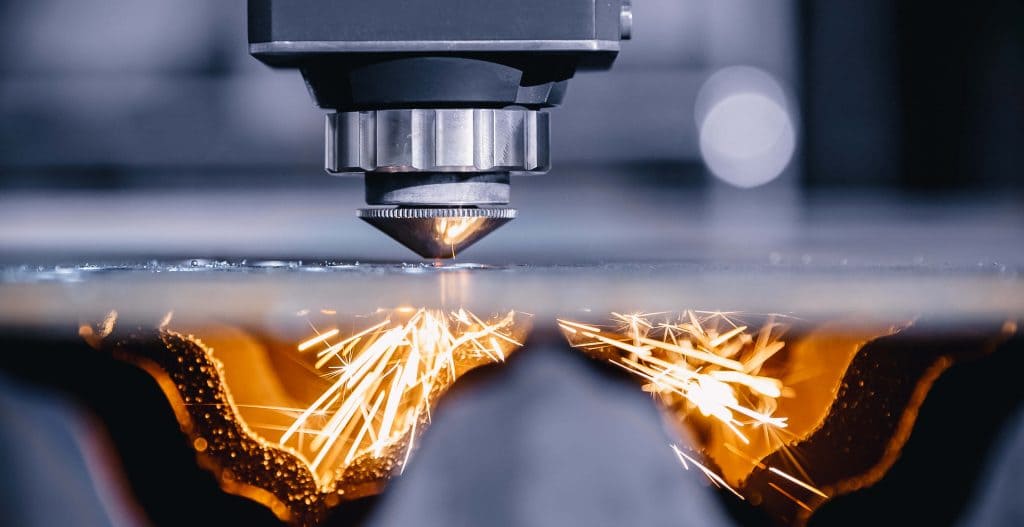
Comparison of cutting accuracy
While both water jet cutting and laser cutting offer high accuracy, they excel in different aspects. Water jet cutting is better suited for cutting thicker materials and complex shapes. Laser cutting, on the other hand, excels in cutting complex designs and thinner materials.
Comparison of heat-affected zone
Water jet cutting eliminates the heat-affected zone, which is very beneficial for heat-sensitive materials. Although the heat-affected zone of laser cutting is generally small, it may affect its performance for some heat-sensitive materials.
8、Conclusion
When choosing cutting technology, water jet cutting and laser cutting each have their own advantages in CNC machining. Reasonable selection based on factors such as different materials, thickness, precision requirements and project progress can give full play to their respective technical advantages and meet different processing needs.
If you are looking for an experienced CNC processing manufacturer, Xavier is your best choice. The Xavier team is well-equipped and can provide high-quality CNC processing services to meet your processing needs. Please feel free to contact us.
